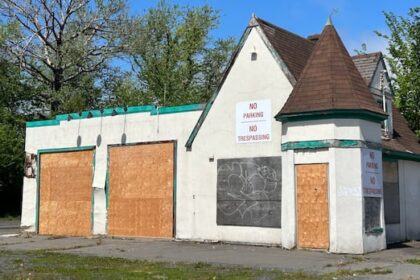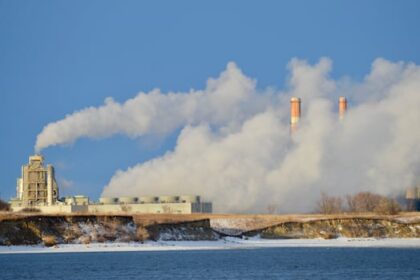ManitobaA northern Manitoba mining project fully owned by a local First Nation could turn Manitoba into the “centre for clean magnesium in North America,” but proponents say it needs help to reach production.100% First Nations ownership would be ‘unicorn event’ in mining sector, business association president saysOzten Shebahkeget · CBC News · Posted: Nov 20, 2025 6:00 AM EST | Last Updated: 5 hours agoListen to this articleEstimated 6 minutesThe audio version of this article is generated by text-to-speech, a technology based on artificial intelligence.A disc of magnesium alloy is seen under infrared microscope in a file image. Norway House Cree Nation, in northern Manitoba, uncovered ‘a treasure chest of all sorts of critical minerals,’ particularly magnesium, shortly after purchasing the former nickel project in 2024, according to the First Nation’s major projects director. (Markus Schwabe/CBC)A northern Manitoba mining project fully owned by a First Nation could turn Manitoba into the “centre for clean magnesium in North America,” but proponents say it needs help to reach production.Norway House Cree Nation took full ownership of the former Minago nickel project, in the northern Manitoba’s Thompson nickel belt, in November 2024.Jim Rondeau, a former Manitoba NDP cabinet minister who is now the major projects director for Norway House, says the project has been rebranded as a critical minerals project, after the discovery of magnesium and other platinum-group metals, such as rhodium, platinum and palladium.”Instead of a nickel project, we found out that we had a treasure chest of all sorts of critical minerals and very obscure minerals that really makes the project much more valuable, and unbelievably more attractive to produce,” Rondeau said.An assessment of the mining site found 60 metres of dolomite rock that contains what he says is a significant amount of pure magnesium.”We could be producing all of the magnesium for Canada and the U.S. for generations,” said Rondeau. “We could actually have the biggest mining camp found in Manitoba, and we’re talking [about] things that rival the Ring of Fire in Ontario.”Former NDP MLA Jim Rondeau, seen here in a file photo, says the mining project could create jobs for Manitoba and make the province ‘the centre for clean magnesium in North America.’ (Jeff Stapleton/CBC)Magnesium is on Canada’s critical mineral list. It’s primarily used to blend with aluminum in order to construct automobiles and machinery, according to Manitoba’s critical mineral strategy.The facility could begin producing magnesium in 2027, but getting there could cost around $1.3 billion, according to Rondeau.A 2011 assessment by the previous owners of the mining project estimated that it could produce over $20 billion a year, Rondeau said, but he believes that number could skyrocket due to the recently discovered platinum-group metals.However, Norway House needs support. The First Nation has requested around $110 million from the federal government and about $60 million from Manitoba for infrastructure development and training — but they’re not asking for “free money,” said Rondeau.”I know … [it] sounds like a lot, but I can tell you that the math is such that the project itself will make that per year” by 2030, said Rondeau.The production method that Norway House plans to use at the mine would be more energy efficient and produce 98 per cent less carbon emissions than the method used in China, which accounts for about 85 per cent of all magnesium production on the planet. China’s mining production relies on the use of coal, Rondeau said.”We could create jobs. Manitoba could be the centre for clean magnesium in North America,” Rondeau said.It would only make sense to “put a little bit of money” into the project in light of renewed interest in the Port of Churchill and its connected rail line, he said.So far, Norway House has received $50,000 from the Manitoba mineral development fund for magnesium testing, as well as ongoing, non-monetary support from the province for things like permitting and quarry licensing, a provincial spokesperson told CBC on Tuesday.CBC has also reached out to Natural Resources Canada for comment, but did not hear back prior to publication.’High reward, high stakes’Jason Rasevych, president of the Anishnawbe Business Professional Association in Ontario, which represents the business interests of over 100 First Nations in the province, says Norway House’s project comes with “high reward, high stakes.”The project will be “an important test case” for Canada when it comes to Indigenous economic reconciliation, he said.”I’ve seen this [term] ‘economic reconciliation’ utilized in corporate Canada’s marketing material, but where does it sit when it’s time to walk the talk?” Rondeau said in a Wednesday interview.”If this fails due to, you know, the lack of support, lack of capital, it signals a major gap in Canada’s critical mineral strategy and community projects.”Jason Rasevych, president of the Anishnawbe Business Professional Association, says a mine fully owned by a First Nation is ‘almost non-existent’ in Canada’s mining sector. (Submitted by Jason Rasevych)The Minago project also appears more “strategically viable” than the Ring of Fire — an area some 500 kilometres north of Thunder Bay, Ont., believed to be rich in a multitude of critical and base minerals — because it’s shovel-ready, has existing infrastructure and its environmental permitting is near complete.The Ring of Fire, meanwhile, has been stalled for years, Rasevych said.Norway House could seek international investors if it can’t find the money to fund the project locally, but Rasevych says that comes with other risks, including China’s dominance in magnesium production.”The big risk is because they control the market, China producers could flood the market to lower prices temporarily,” making new projects like Minago unprofitable, he said.”That tactic raises barriers for entry for new competitors.”A mine fully owned by a First Nation is “almost non-existent” in the mining sector, said Rasevych. First Nations communities involved in such projects typically have a five to 10 per cent stake, he said.”Having 100 per cent First Nation ownership is extremely rare.… It’s a unicorn event,” he said. Norway House Cree Nation “would be first to plant the flag at the top of the mountain of the mining sector for sure in that case.”The project should be made a priority, if it has support from community members and other people in the area who would be affected, said Rasevych.”The Nation is in a very solid position to make an example as a leader, and to show to Canada, the province of Manitoba and to the mining industry that First Nations could drive these types of initiatives and move them to market quicker,” he said.”That could be our competitive advantage on a global stage.”ABOUT THE AUTHORÖzten Shebahkeget is a member of Northwest Angle 33 First Nation who grew up in Winnipeg’s North End. She has been writing for CBC Manitoba since 2022. She holds an undergraduate degree in English literature and a master’s in writing.Email: ozten.shebahkeget@cbc.ca
Thursday, 20 Nov 2025
Canada – The Illusion
Search
Have an existing account?
Sign In
© 2022 Foxiz News Network. Ruby Design Company. All Rights Reserved.
You May also Like
- More News:
- history
- Standing Bear Network
- John Gonzalez
- ᐊᔭᐦᑊ ayahp — It happened
- Creation
- Beneath the Water
- Olympic gold medal
- Jim Thorpe
- type O blood
- the bringer of life
- Raven
- Wás’agi
- NoiseCat
- 'Sugarcane'
- The rivers still sing
- ᑲᓂᐸᐏᐟ ᒪᐢᑿ
- ᐅᑳᐤ okâw — We remember
- ᐊᓂᓈᐯᐃᐧᐣ aninâpêwin — Truth
- This is what it means to be human.
- Nokoma












